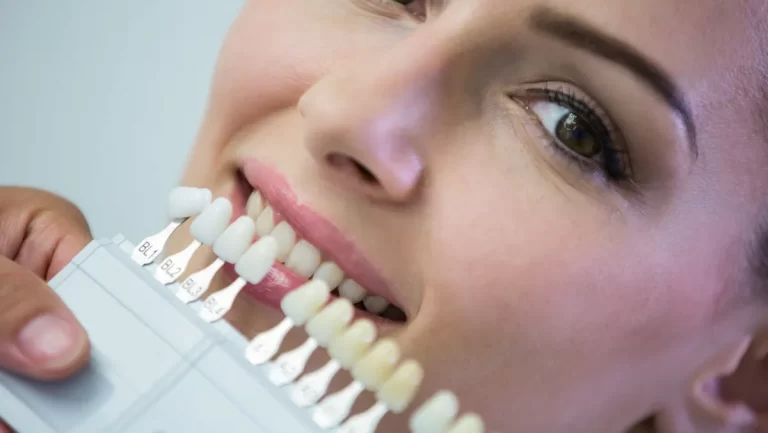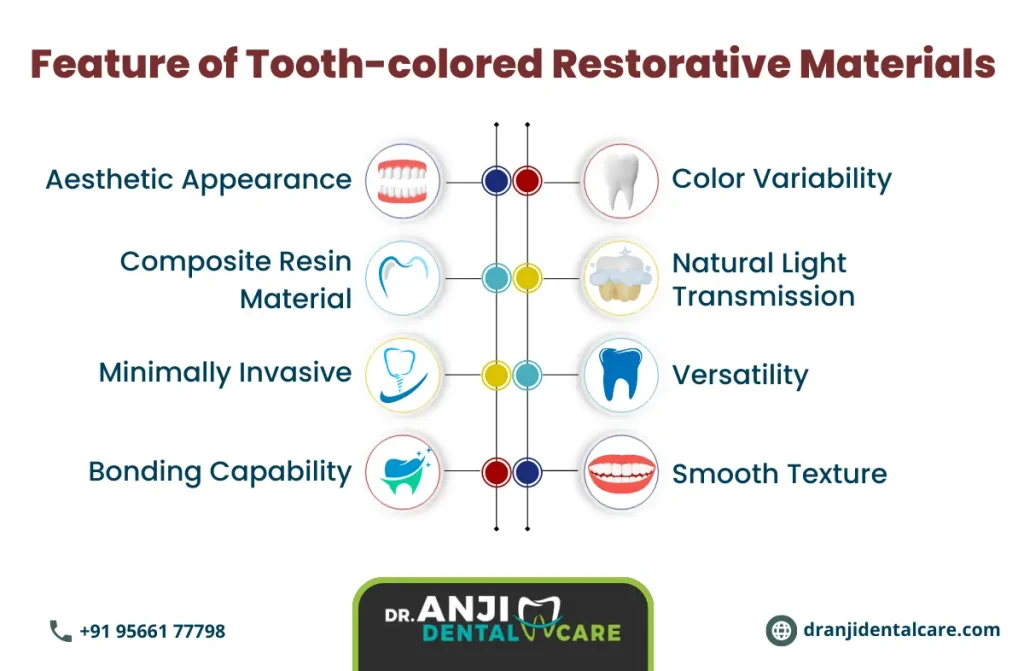Imported Tooth Coloured Restorative materials Full Mouth Dental Implants

Imported tooth-colored restorative materials are dental materials that are used for filling cavities and restoring the natural appearance and function of teeth. These imported tooth-colored restorative materials in Chennai are typically made of composite resins or ceramics and are imported from different manufacturers worldwide.
Overview of Tooth-colored restorative materials in Chennai
Tooth-colored restorative materials are widely used in modern dentistry as an alternative to traditional silver amalgam fillings. They offer several advantages, including improved aesthetics, better bonding to tooth structure, and the ability to mimic the natural appearance of teeth. Imported tooth-colored restorative materials are sourced from different manufacturers around the globe, providing a wide range of options in terms of material properties, shades, and handling characteristics besides making the treatment at a reasonable tooth colored restorative cost in Chennai.

Types of Tooth-Colored Restorative Materials
There are two main types of tooth-colored restorative materials: composite resins and ceramics.
Composite Resins
Composite resins are a mixture of plastic (resin) and small glass or ceramic particles. They are available in various shades to match the natural color of teeth. Composite resins can be directly placed and bonded to the tooth structure. They are versatile and commonly used for filling small to moderate-sized cavities, repairing chipped or worn teeth, and improving the aesthetics of the smile.
Ceramics
Dental ceramics, such as porcelain, are tooth-colored materials that closely resemble natural tooth enamel. These tooth-colored restorative materials in Chennai are fabricated in dental laboratories and then imported for use in restorative procedures. Ceramics offer superior aesthetics and strength, making them suitable for larger restorations, such as crowns, veneers, and inlays/onlays. They are highly biocompatible and durable, providing long-lasting results.
Procedure for Applying Imported Tooth-Colored Restorative Materials
The procedure for applying imported tooth-colored restorative materials in Chennai may vary depending on the specific material and the restoration being performed. This is a general overview of the steps that are involved in the application process:
Patient Preparation
Before the restorative procedure, the patient is prepared similarly to any other dental treatment. This may involve administering local anesthesia to ensure a pain-free experience during the procedure.
Tooth Preparation
For composite resin restorations, the tooth is prepared by removing any decayed or damaged tooth structure using dental drills or laser technology. The tooth is then shaped and cleaned to create an ideal surface for bonding the restorative material. In the case of ceramic restorations, a more extensive tooth preparation is usually required to accommodate the thickness of the restoration.
Shade Selection
In cases where composite resin restorations are being used, the dentist or dental assistant will select the appropriate shade of restorative material that matches the patient's natural tooth color. This ensures a seamless and natural appearance once the restoration is placed.
Material Placement
For composite resin restorations, the dentist applies a bonding agent to the prepared tooth surface. The composite resin material is then placed in layers and shaped to recreate the natural contours of the tooth. Each layer is cured using a dental curing light to harden the material. The dentist continues this process until the desired shape and form are achieved.
For ceramic tooth-colored restorative materials in Chennai, the tooth preparation is done, and an impression of the prepared tooth is taken. This impression is sent to a dental laboratory, where skilled technicians fabricate the ceramic restoration according to the dentist's specifications. Once the ceramic restoration is received from the laboratory, it is checked for fit, adjusted if necessary, and then bonded to the tooth using dental adhesive.
Bite Adjustment and Polishing
After the restoration is placed, the dentist checks the patient's bite to ensure proper alignment and occlusion. Any necessary adjustments are made to ensure a comfortable and balanced bite. The restoration is then polished to achieve a smooth and natural appearance, matching the surrounding teeth.
Post-Treatment Care and Instructions
After the restorative procedure, the dentist provides the patient with post-treatment care instructions. This may include guidelines on oral hygiene practices, diet restrictions, and follow-up appointments for regular check-ups and maintenance.
Advantages of Imported Tooth-Colored Restorative Materials
Imported tooth-colored restorative materials in Chennai offer several advantages over traditional silver amalgam fillings:
- Aesthetics: Imported tooth-colored materials can closely mimic the natural color and appearance of teeth, resulting in a more aesthetic restoration that blends seamlessly with the patient's smile.
- Bonding Strength: Tooth-colored restorative materials can bond effectively to tooth structure, providing a strong and durable restoration.
- Preservation of Tooth Structure: Tooth-colored restorative materials in Chennai require minimal removal of healthy tooth structure, preserving the natural tooth as much as possible.
- Versatility: These materials can be used for a variety of restorative procedures, ranging from small fillings to larger restorations like crowns and veneers.
- Biocompatibility: Imported tooth-colored restorative materials are biocompatible, meaning they are safe and well-tolerated by oral tissues, minimizing the risk of adverse reactions.
- Longevity: When properly placed and maintained, tooth-colored restorations can last for many years, providing long-term functional and aesthetic benefits like the affordable tooth colored restorative cost in Chennai.
Best Restorative Material for Primary Teeth
The best restorative material for primary teeth often includes glass ionomer cement (GIC) and resin-modified glass ionomer (RMGI). These materials are favored for their fluoride-releasing properties, which help prevent further decay. GIC is easy to use, bonds well to tooth structure, and has good biocompatibility. RMGI combines the benefits of GIC with improved strength and aesthetics due to its resin content. Additionally, stainless steel crowns are popular for restoring extensively decayed or damaged primary teeth due to their durability and longevity. These materials ensure effective and lasting restorations for children's primary teeth.
Conclusion
Imported tooth-colored restorative materials, including composite resins and ceramics, offer significant advantages in terms of aesthetics, strength, and versatility. The procedure for applying these tooth-colored restorative materials in Chennai involves tooth preparation, shade selection, material placement, bite adjustment, and polishing. With proper care and maintenance, these restorations can provide long-lasting, natural-looking results, enhancing both the form and function of the patient's smile.






























